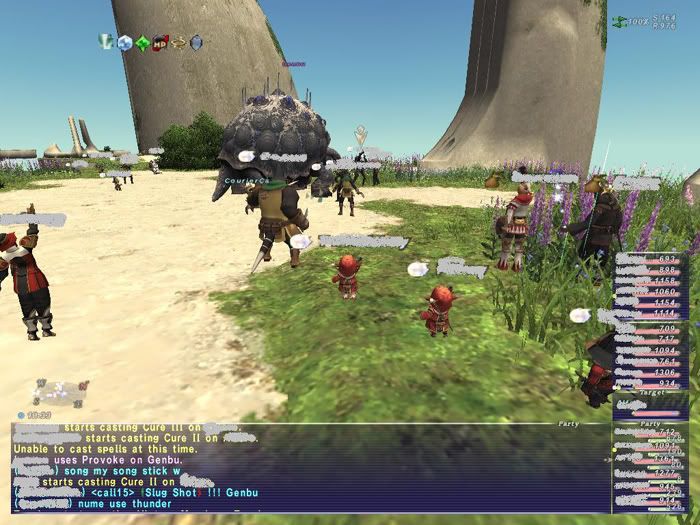"We all must recognize that the rules for newsmakers, not just journalists, have changed, thanks to everyone’s ability to make the news" (Gillmor, 2004). This statement seems to be supported by
Straits Times Online Mobile Print (STOMP), an interactive portal owned by the
Singapore Press Holdings. STOMP allows interaction in three forms, namely print, online and mobile ("About Us", 2006). Regular people like you and I can contribute to news to STOMP by SMSing or emailing them. As a response to this week's question, I attempt to analyze if STOMP is an ideal form of citizen journalism for Singapore.
First of all, let's see what is citizen journalism. In
Wikipedia, citizen journalism is defined as is the act of citizens "playing an active role in the process of collecting, reporting, analyzing and disseminating news and information". It is also known as “participatory journalism" ("Citizen Journalism", 2007). STOMP certainly fits this definition of citizen journalism, since Singaporeans do play an active role as "journalists of STOMP". Then again, Wikipedia further explains that "the intent of this participation is to provide
independent, reliable, accurate, wide-ranging and relevant information that a democracy requires". STOMP may allow citizens to participate in publishing the content, however the fact that content is moderated before it can be published does not really constitutes to independent information. "Citizens are interested in participating and contributing to subjects that traditional news outlets ignore or do not often cover" (Bowman & Willis, 2005). Therefore, in this sense, citizens may still be disappointed when some news are
not eligible or chosen to be published on STOMP.
Yet, it is impossible to have an online interactive portal with unmoderated content. Content can end up being inaccurate and misleading. This may sound contradicting, but an online portal is not unlike a personal blog in the sense where the owner of the blog is responsible for all the content published. In this case, STOMP is responsible for the content published on its portal. As the characteristics of citizen journalism and STOMP are established here, I believe that STOMP may not be ideal yet but it is closest to the ideal form of a
mainstream and
collaborative citizen journalism we can get in Singapore now.
However, STOMP has still some of room for improvement. In fact, if I have the power, the first change I will make to STOMP is to change the layout of the website. In my opinion, the layout of the website can be improved to be
less cluttered and
more clean cut with less animated pictures. This is especially crucial for the index page, where visitors first determine the comfort level of surfing the website. When I first saw the website, it also didn't seem like an online news portal to me. Frankly speaking, at first glance, it looks like a website with filled with animated advertisements and banners.
The idea of STOMP is great, as it provides an avenue for freelance journalist wannabes. Nevertheless, I feel that the layout of the website is less than appealing. It may be just me, but I believe that the aesthetics of a website can make or break it. Never mind how mind blowing the content of the website may be, a less than perfect layout may not bring back visitors. With that being said, as one of the pioneer interactive news portal in Singapore, STOMP shows
great potential. STOMP must listen to its contributors and viewers for making improvements to the website and in time to come, it can reach greater heights in both Singapore and the virtual world.
References
About Us. (2006).
In STOMP. Retrieved March 30, 2007, from
http://www.stomp.com.sg/about/about.htmlBowman, S. & Willis, C. (2005). Neiman Reports: The Future is Here, But Do News Media Companies See It? Retrieved March 31, 2007, from
http://www.hypergene.net/blog/weblog.php?id=P327Citizen journalism. (2007, March 28). In
Wikipedia, The Free Encyclopedia. Retrieved March 31, 2007, from
http://en.wikipedia.org/w/index.php?title=Citizen_journalism&oldid=118429022Gillmor, D. (2004). We the Media: Grassroots Journalism by the People, for the People. Retrieved March 30, 2007, from
http://download.nowis.com/index.cfm?phile=WeTheMedia.html&tipe=text/html#chap3



 Flat nose bridge to high nose bridge!
Flat nose bridge to high nose bridge!


 Ah! The perfect pair of jeans!
Ah! The perfect pair of jeans! Your mums and dads might actually approve these tattoos!
Your mums and dads might actually approve these tattoos! Maybe I could buy some other SL essentials, like houses?
Maybe I could buy some other SL essentials, like houses? Taking a break after all the shopping. :)
Taking a break after all the shopping. :)



















